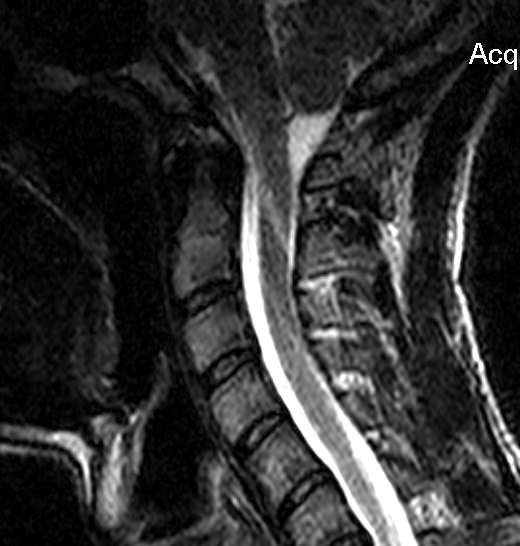The first step is getting the MRI order from Dr. Kaufman. He wrote mine.
The exact order should be an MRI of the skull and cervical spine, upright with flexion-extension. An MRI that is flat won't help you. It needs to be upright with flexion-extension. Without flexion-extension, the problem will be missed.
I can't say this enough: If it's not this exact order, it won't help you. Dr. Kaufman wrote this exact order for me. Be sure to check for and remind Dr. Kaufman of the exact wording if need be, just in case. Mention me by name, too, if you want.
Instructions for the MRI: The MRI happens in three parts: Flexion, neutral, and extension.
During the upright MRI, you'll need to flex your head forward as far as you can. You'll then have a neutral image, head above shoulders normally, without flexing. Then, you'll need to bend your neck backwards as far as you can. You need to push your neck to demonstrate your entire range of motion for this test, or the results will be invalid. (The radiology techs will give you some guidance, but they don't always give detailed instructions, so I included them here. In my case, he gave me really vague instructions, which gave an invalid image, so I had to repeat the test.)
A few days or weeks after the MRI, you'll receive a radiology report. Ignore it. Radiologists aren't trained to look for this problem, craniocervical instability (CCI). So, the written report is meaningless for this purpose.
You'll need to request multiple hard copies of your MRI CDs. Then, you'll need to mail the MRI CDs to one or more of the following three neurosurgeons: Dr. Bolognese (New York), Dr. Henderson (Maryland), or Dr. Gilete (Barcelona, Spain). These are the only neurosurgeons who consistently know how to read these images to diagnose CCI. If you try any others, such as a local neurosurgeon, you will be misdiagnosed.
Good luck!


